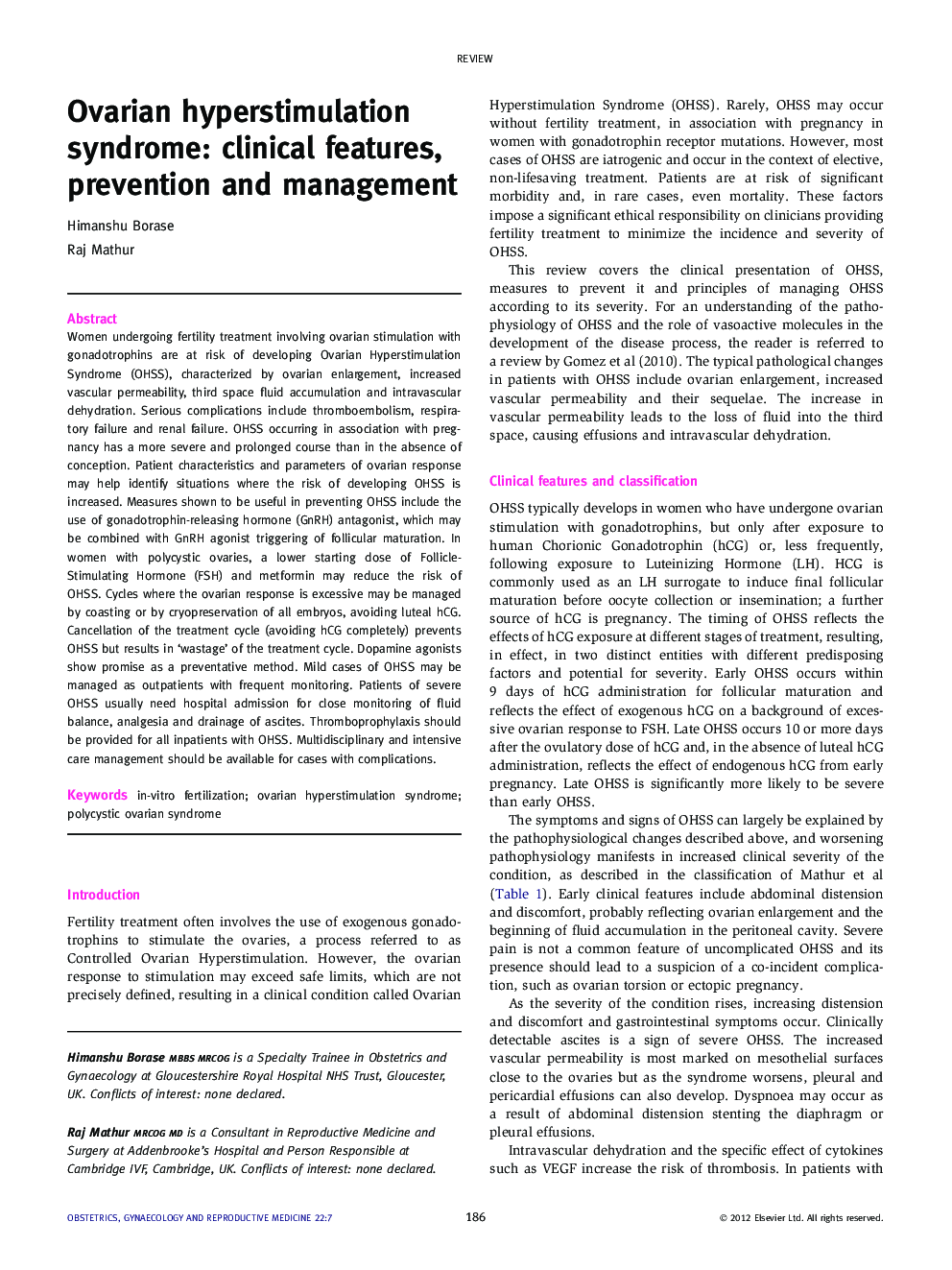| Article ID | Journal | Published Year | Pages | File Type |
|---|---|---|---|---|
| 3967055 | Obstetrics, Gynaecology & Reproductive Medicine | 2012 | 5 Pages |
Women undergoing fertility treatment involving ovarian stimulation with gonadotrophins are at risk of developing Ovarian Hyperstimulation Syndrome (OHSS), characterized by ovarian enlargement, increased vascular permeability, third space fluid accumulation and intravascular dehydration. Serious complications include thromboembolism, respiratory failure and renal failure. OHSS occurring in association with pregnancy has a more severe and prolonged course than in the absence of conception. Patient characteristics and parameters of ovarian response may help identify situations where the risk of developing OHSS is increased. Measures shown to be useful in preventing OHSS include the use of gonadotrophin-releasing hormone (GnRH) antagonist, which may be combined with GnRH agonist triggering of follicular maturation. In women with polycystic ovaries, a lower starting dose of Follicle-Stimulating Hormone (FSH) and metformin may reduce the risk of OHSS. Cycles where the ovarian response is excessive may be managed by coasting or by cryopreservation of all embryos, avoiding luteal hCG. Cancellation of the treatment cycle (avoiding hCG completely) prevents OHSS but results in ‘wastage’ of the treatment cycle. Dopamine agonists show promise as a preventative method. Mild cases of OHSS may be managed as outpatients with frequent monitoring. Patients of severe OHSS usually need hospital admission for close monitoring of fluid balance, analgesia and drainage of ascites. Thromboprophylaxis should be provided for all inpatients with OHSS. Multidisciplinary and intensive care management should be available for cases with complications.
